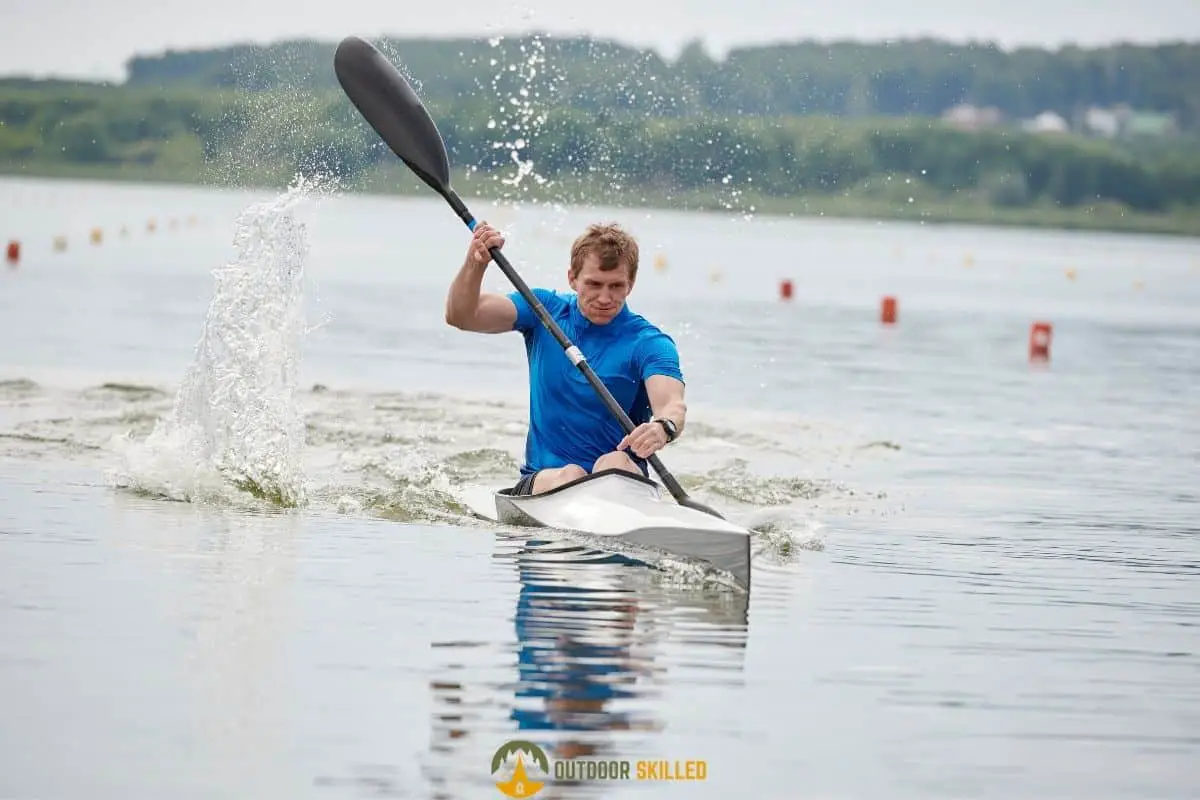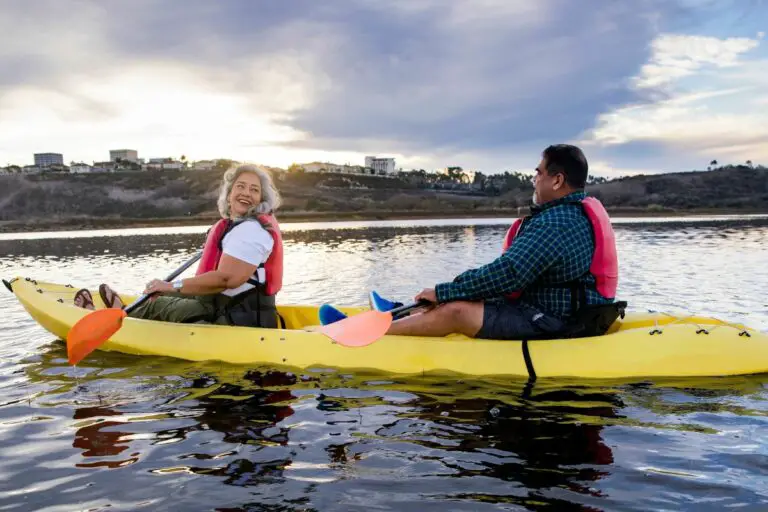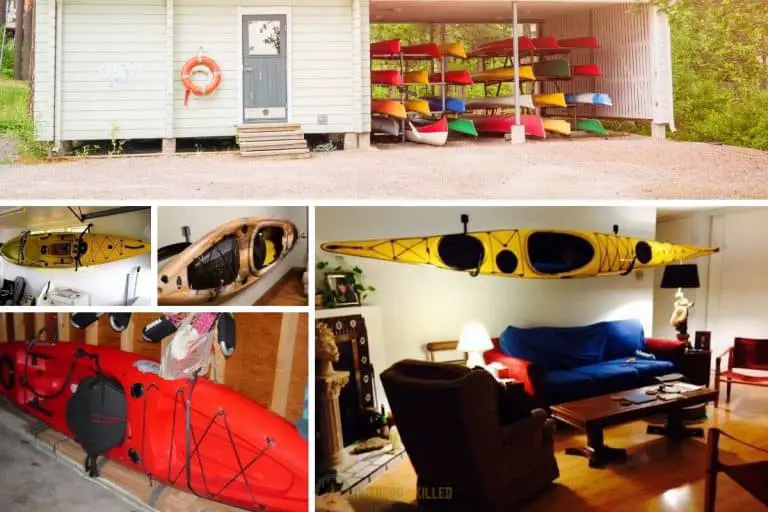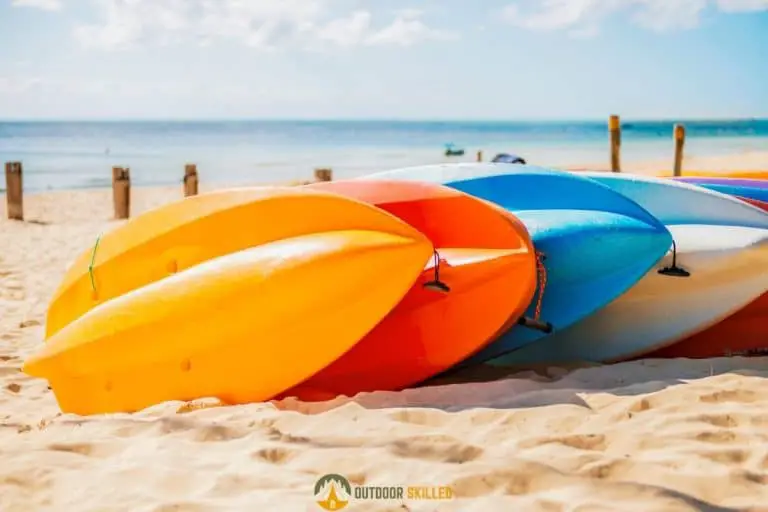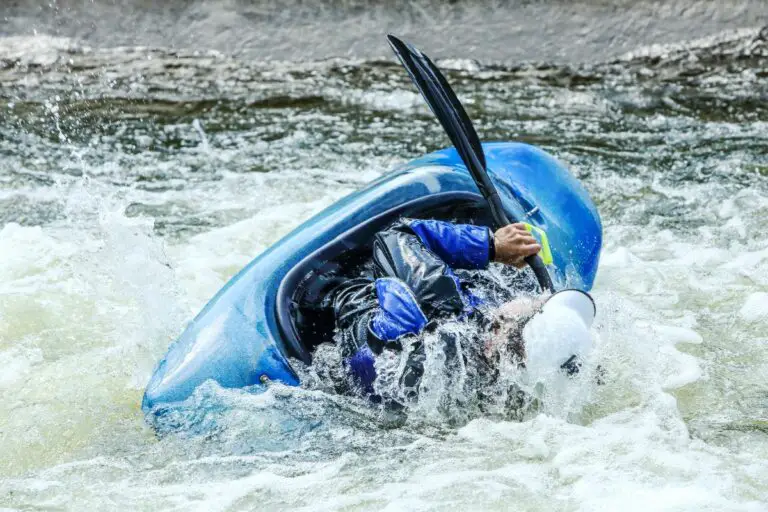What Makes A Kayak Track Straight? Here’s What You Should Know…
One of the most basic things you need to learn if you’re new to kayaking is how to keep your kayak going in a straight line. For a beginner, it can be a challenge to learn how to properly control your kayak. However, with some simple tips and a good amount of practice, you’ll be able to control your kayak like a pro.
So, what makes a kayak track straight? What makes a kayak track straight is mainly the kayaker’s paddling technique and body posture. It is also affected by how the kayak is built and its condition. There are external factors such as wind and current conditions that also have an effect on the kayak’s ability to track straight.
Keep reading to learn more about the reasons why your kayak isn’t going straight and get some pro tips on how to fix any issues that may be causing your kayak to not go straight.
If you’re looking for a Kayak upgrade, make sure to check out my picks for the best Kayaks under $500 here.
Table of Contents
What Makes a Kayak Track Straight?

Tracking is basically the control you have when you’re steering your kayak. There are many factors that contribute to your kayak’s ability to track straight.
Some of these factors are related to the kayaker’s skills such as the paddling technique and the body posture. Other factors are related to how the kayak is built and whether it’s defective or damaged. Also, there are external factors such as wind and current conditions that can greatly affect tracking straight.
It’s very important for beginners to understand the concept of tracking and the reasons why the kayak is not going straight as this plays a huge role in maintaining safety and stability in water.
6 Reasons Why Your Kayak Is Not Going Straight
As mentioned before, there are a lot of factors that affect tracking. So, here’s a list of the most common reasons why you might be facing an issue with keeping your kayak straight.
- The type and size of paddle you’re using don’t suit your needs.
- You are not holding your paddle the right way.
- You are not executing your paddle strokes correctly.
- You are not maintaining proper body posture while paddling.
- Your kayak is defective or damaged.
- There’s interference from wind or current.
13 Tips to Make Your Kayak Go Straight
Now that you know what you might be doing wrong, here are some quick tips and fixes that will help you improve your technique and keep your kayak straight.
- Choose the right type of paddle blades – The best paddle blades to keep your kayak straight are feather blades. They’re easy for beginners to use. They also reduce wind resistance and create more momentum for the kayak to move forward in a linear direction.
- Choose the right size for the paddle – It’s recommended by many experts to use a shorter paddle when you’re a beginner as it is easier to use and enables you to track straight more comfortably. Ideally, a paddle length of 210 cm to 220 cm is suitable if your kayak is within 25 inches of width.
- Learn how to grip your paddle correctly – You need to make sure you’re maintaining the paddler’s box position. The way to do this is by keeping your hands a shoulder-width apart on the paddle and bending your elbows at a 90-degree angle.
- Don’t rely on your dominant hand only – Try to practice applying equal amounts of force using both of your hands because dominant hands are usually stronger and they can be responsible for dictating the direction of your kayak and prevent it from going straight.
- Make sure you’re matching your strokes on both sides of the kayak – You need to make sure that your paddle is sweeping the water at the distance of the kayak on each side and that it’s also hitting the water with the same amount of force and not dipping deeper on one side.
- Practice how to execute different paddle strokes – There are different paddle strokes used by kayakers to achieve different goals. Focus on perfecting the forward stroke which will help you create strong momentum to keep your kayak going in a straight direction.
- Always keep your body in an upright position as much as possible – Make sure your spine is straight while relaxing your shoulders and your stomach.
- Focus on using your core muscles to power your stroke – Rely more on your core instead of the weaker muscles in your arms and shoulders. This will help you reduce the chances of getting fatigued quickly and you’ll also be less prone to injury. You can still rely on the muscles in your shoulders and arms for extra support.
- Distribute your weight evenly throughout the kayak – You need to learn to rotate your hips to be able to shift your weight and avoid putting more pressure on one side.
- Make sure your legs are only resting on both footrests – That is because pushing hard on one or both of the footrests can lead the kayak to turn slightly to one side.
- Keep your legs bent to improve your balance – Bending your legs will help you to rotate your upper body better and give your arms more freedom to paddle smoothly and efficiently.
- Regularly check your kayak for any signs of damage – If you’re about to purchase a new kayak, make sure to take it out for a test drive to ensure it’s not defective. If you already own a kayak, make sure you’re properly maintaining it and check it often for any cuts or scratches from use.
- Check the wind and current conditions before going out on the water – This will help you determine whether you’re going to be working with or against their direction and keep you with keeping the kayak straight.
The most important thing to remember when it comes to mastering tracking straight is to continuously practice your technique and posture while keeping previous tips in mind.
Related Questions
How to Check If Your Kayak Is Damaged?
You can quickly check for damage in your kayak by flipping it over and searching for any deep cuts or scratches on the bottom. Another way to check is to take your kayak out in shallow water and walk alongside it until the water is almost hip deep. Then give the kayak a gentle push and observe how it moves. If it leans to one side, this means it is damaged.
What’s The Difference Between Sea Kayaks and Whitewater Kayaks When It Comes to Tracking?
Sea kayaks are longer and have a heavier hull. This makes them more suited for tracking in a straight direction without any maneuvers. On the other hand, whitewater kayaks are smaller with a flat hull. This makes them more suited for maneuvers as they’re more prone to lean toward one side in the water.
What Are the Kinds of Paddle Strokes?
There are 4 kinds of paddle strokes. The forward stroke is the most fundamental to getting your kayak to move in a straight direction. The reverse stroke is the opposite as it’s used to back up the kayak. The sweep stroke is used to rotate the kayak to one side while the draw stroke is used to move the kayak sideways in a horizontal direction.
Helpful Resources
Canoe posture characteristics in men’s 500 m canoeing
If you like this article, please share it or pin it, you can find the share buttons below. We will really appreciate it ❤️

